After the repair of their housing, whether it be an apartment in a city line or a house in rural ...
|
|
The porch to the veranda allows you to harmoniously continue the atmosphere of solitude with nature ... |
The fence in the personal or summer cottage is a visiting card of the owners of the house. AND... |
DIY APPLICATION
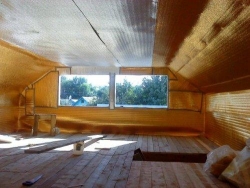
The conditions of comfortable residence in the rooms of the attic directly depend on the correctly made thermal insulation layer. The insulation of the attic roof will preserve precious heat in winter, and in the summer heat will create such a pleasant coolness in the rooms. But the creation of a truly reliable and effective thermal insulation for the roof of the attic requires knowledge and understanding of the technology of insulation. In general, with your own hands, you will need to make skills in handling the tool, desire and time to perform the attic roof insulation.
- Technology and scheme of attic roof insulation
- The choice of materials
- How to properly insulate the attic roof
Technology and scheme of attic roof insulation
The technology of insulation of the attic roof is largely similar to the insulation of ordinary roofs, with the only difference being that more stringent requirements are imposed on the attic. This is due to the peculiarity of the design of the attic in general. It's all about the walls of the interior, which are literally close to the roof, and in some designs are one whole. That is why the premises of the attic are cooled faster in winter, and in the summer heat they warm up very much.
The very insulation scheme of the attic roof is a multilayer pie, consisting of the following layers:
- vapor barrier;
- thermal insulation;
- ventilation gap;
- waterproofing;
- roof.
Roof insulation scheme, video:
Each of these layers fulfills its task, and their presence is necessarily. But before insulation of the attic roof, the greatest attention must be paid to the thermal insulation layer and ventilation, since it is on these two elements that 80% of success in achieving comfortable living in the premises of the attic.
To answer the question of how best to insulate the attic roof, you need to know why to warm it. So, the first thing that thermal insulation is needed is the maintenance of heat in the cold period. The second is the protection against excess heat in a hot period. For those who still do not know, all thermal insulation materials have such an indicator as thermal conductivity, which is responsible for the transfer of heat from the room or to the room. The smaller this indicator, the less heat penetrates through the layer of material and the less the thickness of thermal insulation is necessary to obtain optimal insulating characteristics.
The importance of thermal conductivity cannot be underestimated. And that's why. We already know that the walls of the attic are one whole with a roof. And in winter, in the heated room of the attic, the most warmth from the house goes towards the roof, and the unshakable laws of physics are to blame. Heat is transmitted to the roofing material, a covered layer of snow, which, by the way, is a natural insulation. Snow, thanks to its structure and internal air pockets, acts as an external insulation in the range of low temperatures from -2 C. And now, with the contact of the warm roof and snow, the latter tears a little slightly, and since it is on the street, it freezes again, forming an ice crust again . But the ice does not have the thermal insulation properties of snow, in addition it weights the roof and destroys the roofing. If the thermal insulation of the roof, the roof in particular, is made competently, then in winter the snow on the roof will lie evenly and not thaw.
As for the function of thermal insulation in the warm season, then everything is somewhat simpler. In the summer heat, excess heat from the roof is transmitted inside the attic, and being in the room becomes simply unbearable due to the heat, and even several air conditioners will not be able to cope with this level of heat. The thermal insulation layer will prevent this process, providing coolness under the roof. Of course, in comparison with the first floor, the temperature will be several degrees higher, but ultimately quite acceptable.
Now, knowing and understanding why the thermal insulation of the roof is needed, you can pay attention to the design of the roof and its influence on high -quality thermal insulation. To make the thermal insulation of the attic correctly, it is necessary to compare the device of a conventional roof and attic. It immediately becomes obvious that the difference lies in the size of the ventilation space between the roof and the living rooms. And if the ordinary roof has an attic with auditory windows for these purposes, then the attilation space has 10 15 cm in the attic space. For the correctly made attic roof, the presence of competent ventilation is no less important than the thermal conductivity of the materials. There are several reasons for this. Firstly, ventilation removes excess moisture from under the roof, preserving and extending the service life of the entire structure. Secondly, in winter, ventilation does not allow to overheat the roof, preserving the snow cover from melting and preventing the appearance of ice. Thirdly, in the hot summer, ventilation removes part of the heat from under the roof, preventing overheating of the interior and structural elements of the roof.
The choice of materials
Video: Insulation of the attic roof
Before proceeding with the work, it is necessary to decide on the material of the insulation, since the number of layers of the thermal insulation pie and its thickness will depend on it. Today the market can provide a huge selection of various thermal insulation materials. Popular are mineral wool, glass wool, styrofoam, extruded polystyrene foam, foamed glass, poliuretan foam. In addition, do not forget about natural insulation wood chips, paper, straw. But choosing a particular material for insulation of the roof of the attic, it is necessary to focus on four main parameters. The first, already known to us, coefficient of thermal conductivity. For roof insulation, it is best to take material with a coefficient of 0.05 W/m*K and below. The second parameter moisture resistanceAnd the higher it is, the better. The third is burning resistance. And the fourth Environmental safety of the material. There are no special questions with the last two parameters, since they indirectly do not affect the specifics of the creation of a thermal insulation pie. But the coefficient of thermal conductivity and moisture resistance can be persuaded to choose a certain material.
Choosing as thermal insulation minvata or glass wool, it is necessary to be prepared for the fact that over time the insulation qualities of these materials will worsen greatly. This can happen for two reasons. The first material was cream or vice versa scattered. The second level of moisture in the material exceeded all permissible norms. There is nothing surprising in these problems. Vata, whatever it is, remains cotton, a material that is very prone to absorb moisture. In addition, this material does not tolerate mechanical loads and is destroyed under their influence. Another disadvantage of cotton wool as a heater for the roof of the attic is the need to create a thick pie of 3 4 layers of insulation in order to achieve the desired result. In conclusion, for thermal insulation from cotton wool it is necessary to make several layers of steam and waterproofing. But the price of cotton wool and its general accessibility make it very attractive.
The attic roof is also possible polystyrene. This material is not afraid of water and has excellent thermal insulation characteristics. But here you should be careful when choosing, since not every foam is suitable for these purposes. Extruse polystyrene foam is closest to the operational characteristics and often used. This material is also not afraid of moisture, has a fueling class from G1 to G4, and also has a coefficient of thermal conductivity of 0.05 W/m*K. Of the shortcomings of polystyrene foam, its synthetic origin and a fairly high price should be noted.
For those who prefer to build from absolutely environmentally friendly materials, they are suitable as thermal insulation granular paper, foam -glass, reeds, straw or sea algae ramps. The listed materials have excellent thermal conductivity indicators, environmentally friendly, but, like any other material, each of them has its own shortcomings. Foam glass is too fragile. Kamysh, straw and seaweed seaweed, and require skills to use them. Granular paper requires special equipment and skills.
How to properly insulate the attic roof
All work on warming the roof of the attic is reduced to the preparation of space for thermal insulation, laying and fixing of materials on the spot. To do this, do the following:
- even at the stage of the construction of the rafters, it is necessary to worry about the step with which they will be installed. The step itself should be chosen one that will maintain the reliability of the roof structure and at the same time will allow you to put in the approval between the rafters of the mats or the heat -insulation plate;
- if a thermal insulation material is used, which is not susceptible to moisture, then vapor barrier is not required. Otherwise, for example, for mineral wool, a layer of vapor barrier is laid over the rafters;
- a capture and a crate is packed, on which a layer of waterproof vapor -proof membrane is laid. The gap that will turn out between the counterparty and the insulation will perform ventilation functions. In addition, you can equip ventilation ventilations in the roof;
- inside, between the rafters, thermal insulation is laid and is fixed there. But there is one important point. The rafter leg is made either of wood or metal, in any case, the rafter has the thermal conductivity is much worse than that of thermal insulation material. Therefore, the rafter serves as a bridge of the cold. To protect yourself from this, on top of the already laid thermal insulation and rafters, set up another continuous layer of thermal insulation. Unfortunately, this will hide the rafters, to which other structural elements of the attic will be attached in the future. And in order to facilitate further work, it should be noted where the rafter goes;
- a layer of vapor -permeable film is laid on top of thermal insulation and fixed with an internal crate.
Video: how to insulate the attic roof
Today, the attic is popular with the owners of country houses. But many pay too little attention to its insulation and remain disappointed after some residence in it in summer and winter. But, understanding the purpose of the thermal insulation of the roof and arranging it according to all the rules, you can feel all the positive aspects of living in a country house with an attic.


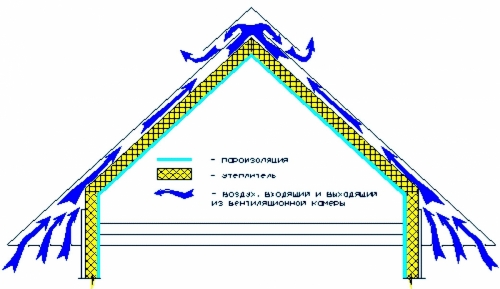
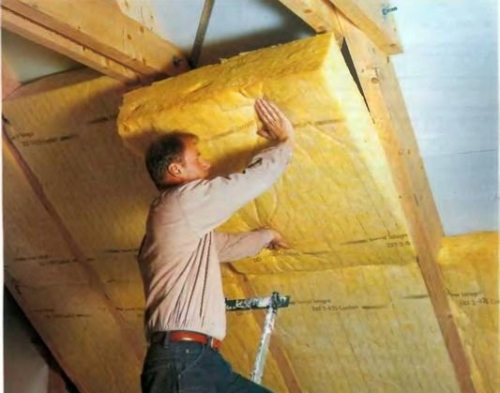
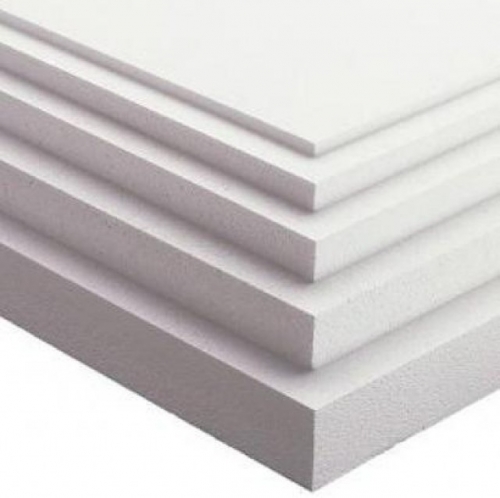
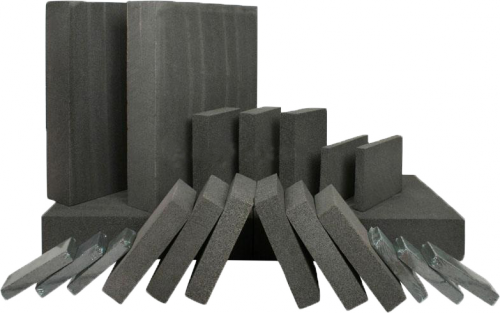
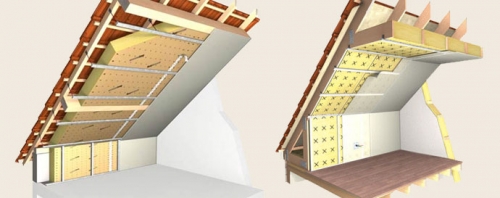
What idiots always put
What idiots always put -(disadvantages)!?
Such an important and one of the most understandable and necessary articles.
I helped me a lot !!!
If he could, he would have set 100 ++++++++ for this article!
The author respects and respect!
And what density do you need
And what density do you need to choose mineral wool for the attic roof?